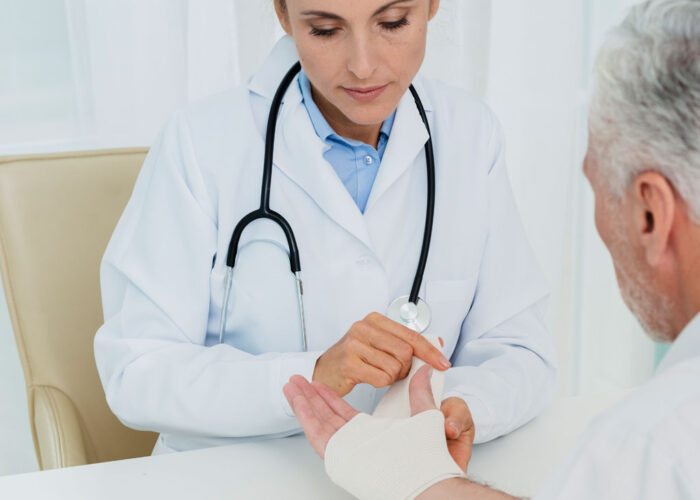Dive deep into the world of wound care with our detailed guide on assessing wound healing. Explore the top tools and techniques that are revolutionizing the way we monitor progress in wound recovery.
Introduction
Wound care has come a long way, and with today’s advances in medical technology, assessing wound healing is more precise than ever before. But why is monitoring progress crucial, and how can one effectively measure the stages of wound recovery? Hang tight; we’re about to unravel the magic behind Assessing Wound Healing: Tools and Techniques for Monitoring Progress.
Assessing Wound Healing: Tools and Techniques for Monitoring Progress
In the world of healthcare, nothing’s left to chance. Especially when it comes to wound recovery, assessing and monitoring progress is of paramount importance. But why? It’s simple, really. Knowing how a wound is healing provides insights into the effectiveness of the treatment, the need for changes in care strategies, and the overall health of the patient.
Why Monitoring Wound Healing is Crucial
- Infection Detection: Early signs of infections can be nipped in the bud, ensuring the patient’s safety.
- Treatment Effectiveness: Assessing the healing process can pinpoint if the current treatment is working or if adjustments are needed.
- Patient Comfort: Keeping an eye out ensures the patient is pain-free and comfortable during their healing journey.
The Gold Standard Tools in Wound Assessment
Visual Inspections: An age-old method, but don’t knock it just yet! A keen eye can tell a lot about a wound’s state.
Photographic Assessments: With advancements in technology, wounds can be photographed over time to monitor progress meticulously.
Laboratory Tests: Biopsies, bacterial cultures, and other lab tests offer an in-depth look into the wound’s microbiological status.
Techniques to Ensure Precise Monitoring
1. Wound Measurement: Using rulers or wound tracing methods to measure the wound’s size over time.
2. Odor and Exudate Assessment: A change in wound odor or the amount of exudate can indicate complications.
3. Temperature Monitoring: Fluctuations in wound temperature can be early signs of infections or non-healing.
Innovations in Wound Monitoring
The future looks bright, folks! From smart dressings that can detect infections to wearables that monitor skin temperature and moisture levels, innovations are skyrocketing in the wound care arena.
Monitoring Progress: The Key to Successful Recovery
“Rome wasn’t built in a day,” and neither does a wound heal overnight. Monitoring progress is the cornerstone of successful wound recovery.
Setting Baseline Measurements
Before you can appreciate where you’re going, you’ve got to know where you’ve been. Setting baseline measurements gives healthcare professionals a starting point for progress tracking.
Documenting Changes Over Time
A wound’s tale is in its timeline. Regularly documenting changes, whether through photographs, written descriptions, or lab results, paints a clear picture of the healing trajectory.
The Role of Patient Feedback
Let’s not forget the star of the show: the patient! Regular feedback on pain levels, comfort, and overall feelings can guide care decisions and ensure a holistic healing approach.
FAQs
What’s the most accurate way to assess wound healing?
While a combination of methods ensures accuracy, photographic assessments, paired with lab tests, offer a comprehensive look into the wound’s healing status.
Why is assessing wound healing important?
Assessing wound healing provides insights into treatment effectiveness, potential complications, and overall patient health. It’s the key to personalized and effective care.
How often should wound progress be monitored?
This largely depends on the wound type and severity. While some wounds may need daily checks, others might require weekly assessments.
Can technological advancements predict wound healing outcomes?
While we’re getting there, current technologies can offer insights and data that guide predictions. With ongoing research, predictive tech in wound care seems promising.
Are there any risks associated with wound assessment tools?
Most tools used for assessment are non-invasive and pose minimal risks. However, procedures like biopsies may have associated risks, which a healthcare professional will always discuss beforehand.
How do patient feedback and clinical assessments correlate in wound healing?
Patient feedback provides a subjective view of their experience, while clinical assessments offer objective data. Combined, they provide a comprehensive understanding of the wound’s healing journey.
Conclusion
Assessing Wound Healing: Tools and Techniques for Monitoring Progress isn’t just a fancy term in medical books. It’s a continuous process, a dance between technology, expertise, and patient experience. With the tools and techniques at our disposal, coupled with the future innovations in the pipeline, we’re on the path to revolutionizing wound care. Here’s to a future where every wound’s story is one of success, comfort, and holistic recovery.


Everything is very open with a very clear clarification of the challenges. It was really informative. Your site is extremely helpful. Thank you for sharing!